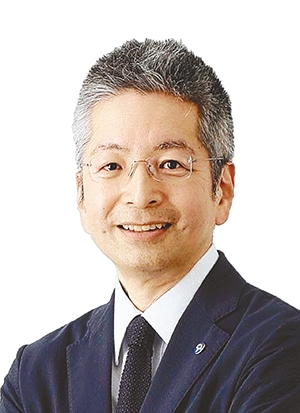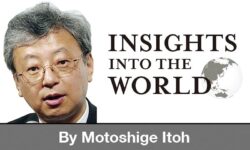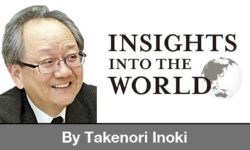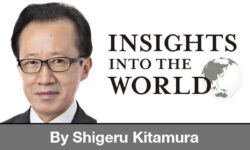10:30 JST, September 8, 2023
About four months have passed since COVID-19 was downgraded from the equivalent of a Category II disease to Category V on May 8, under Japan’s Infectious Diseases Law.
Category V is part of this law, originally enacted in 1998 to “provide for necessary measures concerning the prevention of infectious diseases and medical care for patients with infectious diseases.” Defining such diseases, the law refers to a five-tier classification from categories I to V, depending on contagion and aggravation risks, as well as other groups including “infectious diseases such as new types of influenza.”
Category V infectious diseases include seasonal flu and measles. This category requires no restriction on individuals’ activities. The government conducts surveys to keep the nation and medical institutions updated on the latest information on infection cases.
Category II’s infectious diseases include tuberculosis and avian influenza, with a related article calling for the hospitalization of Category II patients and the disinfection of food and drink as well as clothing, bedding and other physical items used by them. In the case of categories I to III, not only hospitalization but also restrictions on personal rights, including those on attendance at work, are permissible.
The reason COVID-19 was originally designated as “the equivalent of Category II” instead of just Category II is because it was classified into the group covering “infectious diseases such as new types of influenza,” which is outside the five-category classification framework.
This kind of designation permits the authorities to limit personal rights in a relatively flexible manner in their efforts to prevent infections. Against such a backdrop, they took measures in response to the equivalent of Category II. Consequently, not only COVID patients but also asymptomatic carriers of the novel coronavirus were advised to be hospitalized or to take other measures. This approach was in effect the equivalent to tackling a Category I case, which covers infectious diseases with more perilous symptoms.
The costs of such hospitalizations under the Infectious Diseases Law are fully covered by public funds, largely because of the imposition of rigid restrictions on patients’ freedom of movement, not simply because of the severity of the diseases.
With COVID-19 designated as “the equivalent of Category II” and covered by the 2012 law on special measures for new types of influenza and other novel infections, the government became capable of requesting not only coronavirus patients but also those having had close contact with them to refrain from going out, thus limiting personal rights. Further, when state-of-emergency declarations were in place, the central and local governments asked even people who had no close contact with infected patients to avoid outings and requested shops and stores to close.
The reason the government also became capable of asking people to wear masks and businesses to require employees at their workplaces to do so was the existence of the special measures law of 2012 that empowers it to restrict personal rights. One of the terms of application of the law is that “the conditions of a disease are considerably severe compared to a seasonal flu.”
The fact that COVID-19, which is no longer within the coverage of the special measures law, has been recategorized as a Category V disease means that it has been judged to not be serious enough to permit the government to limit the fundamental human rights that are guaranteed by the Constitution. This judgment is akin to people’s use of vehicles despite their awareness of such risks as traffic accidents and environmental degradation and so on. As we are faced with many risks in society, deciding which one we should deal most seriously with depends on an individual’s sense of values.
Post-event scrutiny necessary
When the government formulates a new policy, experts well-versed in the related field provide it and the nation with relevant scientific information. It goes without saying that no political decision should contradict scientific information. That said, however, each policy has multiple purposes that require value judgments, namely, determining what information should be given more weight.
In the medical universe, evidence-based medicine (EBM) constitutes the mainstream of health care decision-making focused on the effectiveness of treatments and medication. In the event that something is not rigorously endorsed by evidence, it must not be applied in practice. This mindset has become considerably dominant in the medical world. Consequently, there have been many cases where changes have been made to long-established treatments.
There are, however, two notions about EBM. One goes that treatment should be chosen from multiple options based on evidence, while the other takes it for granted that the available evidence will point to only one possibility. The two notions differ as to their implications. To give an easy-to-understand analogy, consider two treatments: one results in short-term recovery with severe side effects and the other requires long-term recovery but with mild side effects. Which treatment is desirable? The answer should be left to what each patient and/or the family members value. There can be no way for any medical professional to automatically pick a treatment based on evidence.
The same is true of the government’s responses to the COVID pandemic.
Throughout the pandemic, experts kept policy decision-makers informed about how effective state-of-emergency declarations and other measures to restrict people’s activities would be in containing the spread of the novel coronavirus and how they would affect society and the economy. The government-appointed advisory subcommittees on responses to coronavirus infections and on the COVID basic action policy — I have been on both — should have played a more proactive role in providing information about the socioeconomic impact. In my opinion, as medical professionals have had the largest share of both panels’ membership, expertise on socioeconomic impact has not been sufficiently utilized.
The other issue has been that despite certain experts obtaining new information about the state of novel coronavirus infections, there have even been delays in information updates, resulting in information not being reflected in the latest government responses to the pandemic.
When the government declared a coronavirus state of emergency for the first time, it aimed to keep person-to-person contact 80% below what is usual. The goal was based on a simulation that indicated that unless an 80% cut in person-to-person contact was realized, in just four weeks it would become impossible for Japan to keep the numbers of infected patients below a certain threshold for its mainstay COVID containment strategy, known as a cluster-based approach, to remain viable.
But a recent study that replicated the mathematical model used in connection with the first state-of-emergency declaration found that if person-to-person contact was lowered to 80%, the number of newly infected patients would plummet to the government’s target in just one day. What the study found has called into question the real necessity of the monthlong 80% reduction in person-to-person contact.
Of course, the original simulation — which was carried out so expeditiously when the country was in an emergency situation amid rapid COVID contagion — greatly benefited society. Scientific evidence nevertheless has its limits, too. Therefore, given insufficient data, we need to make judgments on the premise that highly accurate simulations will not necessarily be available immediately.
Similar developments have been seen in global measures for preventing novel coronavirus infections.
The World Health Organization initially stated the coronavirus was “transmitted between people through respiratory droplets and contact routes.” Japan worked out a series of measures based on this WHO scientific brief. As a result, shops and stores in the country installed transparent acrylic panels and plastic sheets to prevent droplet infection, while customers were asked to wear masks. Japanese researchers used the Fugaku supercomputer to produce convincing simulation footage showing how effective acrylic panels and plastic sheets were in preventing the flow of droplets.
However, on April 30, 2021, the WHO added aerosols to its list of ways the novel coronavirus is transmitted. Aerosols are much smaller than droplets and can remain airborne for longer. Then, the importance of ventilation to let fresh air into indoor spaces increased as a measure to prevent the spread of the novel coronavirus. It also became known that acrylic panels could have the opposite effect in terms of achieving better ventilation because they obstruct the flow of air.
We learned that once an infection countermeasure takes root in society, people tend to remain entrenched in it for a long period of time even when the discovery of new evidence casts doubt on the effectiveness of the original measure.
Any delay in evidence updates adversely affects both infection measures and social activities. Whenever evidence is updated, related measures must be brought up to date. All COVID measures introduced thus far should be examined with a view to realigning the policy-science relationship.

Fumio Ohtake
Ohtake is a specially appointed professor at the Center for Infectious Disease Education and Research (CiDER) at Osaka University, where he served as an executive vice president in 2013-15. He was president of the Japanese Economic Association in 2020-21.
The original Japanese article appeared in the Sept. 3 issue of The Yomiuri Shimbun.
"Editorial & Columns" POPULAR ARTICLE
-

Violations of Subcontract Law: Major Automakers Must Eliminate Old Practices
-

Local Governments’ Tax Revenues: Devise Ways to Correct Imbalances in Tax Sources
-

5 Japanese Business Dinner Mistakes to Avoid — and What They Taught Me About Business in Japan
-

Heavy Rains in Asia: Support for Victims, Flood-Control Measures Urgently Needed
-

Rice Coupons: A Misguided Approach to Countering Rising Prices
JN ACCESS RANKING
-

Keidanren Chairman Yoshinobu Tsutsui Visits Kashiwazaki-Kariwa Nuclear Power Plant; Inspects New Emergency Safety System
-

Imports of Rare Earths from China Facing Delays, May Be Caused by Deterioration of Japan-China Relations
-

University of Tokyo Professor Discusses Japanese Economic Security in Interview Ahead of Forum
-

Tokyo Economic Security Forum to Hold Inaugural Meeting Amid Tense Global Environment
-

Japan Pulls out of Vietnam Nuclear Project, Complicating Hanoi’s Power Plans
























